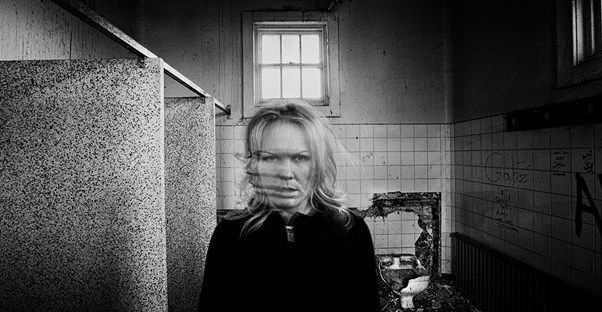Movies with potrayals of mental illness are made all the time, and in writing about them, it would be easy to cite the obvious. Marketing of films such as A Beautiful Mind, Shine, and Frances explicitly stated their films were tragedies or triumphs related to mental illness. But there are films that although not marketed based on depictions of mental illness, provide accurate portrayals of specific diagnoses. Here are Five.
1. BUG (2007)
The Exorcist and the The French Connection had long since established William Friedkin as a master whose films feature intense, tortured characters, but it’s possible none were as disturbed as Peter Evans, portrayed by Michael Shannon, in Bug. It’ s tempting to label Bug a horror film, or a psychological thriller, but that would minimize its focus on the concept of folie a deux (French for Madness of Two); a shared psychosis experienced by one, then transmitted to another. In Bug, the other is Ashley Judd, who plays a lonely woman traumatized by an abusive relationship. It is her vulnerability that exposes her to shared psychosis, and makes for a film as intense as any Friedkin ever directed, and with one of the more bleak endings.
2. FATAL ATTRACTION (1987)
Anyone who works in mental health knows this film portrays Borderline Personality Disorder (BPD), but to the lay audience, the movie is about a psychotic homewrecker. In the film, Alex Forrest (Glenn Close) exhibits classic symptoms of BPD. She has no close relationships, is sensitive to perceived abandonment, and self harms to seek attention. Depending on your preference, the ending of the film was either awesome, or crap. While it’s true sufferers of BPD can reach psychotic states, they often do not assume powers of horror film serial killers like Alex did when she leapt from the tub. Unfortunately, the more subtle original ending, in which Alex commits off-screen suicide, was scrapped (but included on blu-ray) because it was too boring for audiences thirsty for blood. Theatrical ending aside, Fatal Attraction nails BPD.
3. SLEEPING WITH THE ENEMY (1991)
Casual viewers of this film might believe Martin Burney (Patrick Bergin) is just a really controlling guy prone to violent outburst, but SWE gives a spot on portrayal of Narcissitic Personality Disorder (NPD), recently thrust into mainstream consciousness in the wake of Donald Trump’s presidency. In the film, Martin exhibits emotional abuse and gaslighting typical of a narcissist, and he is also addicted to adulation and power (ring any bells, Americans?). Although he considers himself a master of the universe, like all narcissists, he is a shell whose life is meaningless without the object of his obsession, his wife, Laura (Julia Roberts). Because this is a movie, only a violent ending would suffice, but ending aside, Sleeping with the Enemy is textbook stuff.
4. AMERICAN BEAUTY (1999)
Obviously there is a lot going on here; closeted homosexuality, depression, inappropriate infatuation, it is Annette Bening as Carolyn Burnham who nails her portrayal of a women with Obsessive Compulsive Personality Disorder (OCPD). Although OCPD shares symptomology with the wider known Obsessive Compulsive Disorder (OCD), there are distinct differences between the two. While Carolyn displays all the hallmarks of OCD; rituals, need for excessive orderliness etc., she also experiences perfectionism, workaholism, and thoughts her efforts are never enough. However, the most distinct difference between the two illnesses is that while sufferers of OCD understand their symptoms as problematic and undesired, Carolyn’s symptoms are ego syntonic; that is, they align with what she believes is acceptible. Think about the insight of Melvin Udall (OCD) in As Good as it Gets, versus lack thereof displayed by Carolyn. Both give excellent characterizations of mental illness, but Carolyn carries the lesser known diagnosis.
5. BATMAN BEGINS (2005)
Whether you think of him as billionaire, vigilante, or superhero, Batman/Bruce Wayne suffers from Post Traumatic Stress Disorder (PTSD). First and foremost, Bruce Wayne was subjected to significant trauma when he witnessed the murder of his parents, and his survivor’s guilt is a symptom. People with PTSD experience other symptoms in four domains: Reliving trauma, avoidance, arousal/cognition, and cognition/mood. Bruce Wayne meets all the criteria. He represses feelings about his trauma, but relives it through flashbacks. His sleep is poor. He broods. He shies away from intimate attachments, and he avoids activities of enjoyment. It’s a perfect portrayal of significant mental illness, but within the context of the film, it goes unnoticed.
There are endless other films with accurate depictions of mental illness, but were not marketed as such. What do you think has been left off the list?

There are some accurate depictions of mental illness in films we do not often consider.
